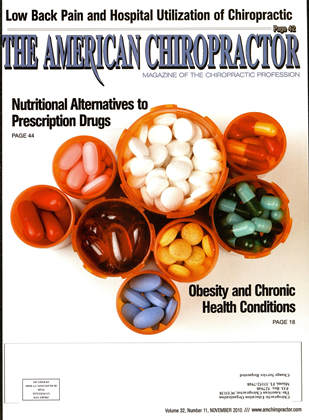I n 2009, Russo, Wi-:ik and Elixiiausi:k ri:i>orti:d that hospital stays for low back pain were 3.9 out of every 1000 people aged 55-64 years. That was rated as the #8 reason for hospital stays and fell closely behind cardiac conditions and degenerative arthritis. They provided the following rankings for the conditions listed below as reasons for hospital admissions in people aged 55-64 years: Coronary atherosclerosis (hardening of the arteries) Osteoarthrilis Nonspecific chest pain Pneumonia Congestive heart failure (CHF) Acme myocardial infarction (heart attack) Complication of medical device, implant or graft Back problems Chronic obstructive pulmonary disease (COPD) Cardiac dysrhythmias (irregular heart beat) Septicemia (blood infection) Complications of surgical procedures or medical care Diabetes mellitus with complications Acute ccrebrovascular disease (stroke) Skin infections Mood disorders Adult respiratory failure or arrest Biliary tract disease Dehydration Metastasis (spread of cancer or secondary cancer) A study by Legorreta (2004) compared more than 1.7 million insured patients looking for treatment for back pain. The outcomes showed, when chiropractic care was pursued, the cost of treatment was reduced by 28%, hospitalizations were reduced by 41%, back surgery was reduced by 32%, and the cost of medical imaging, including X-rays and MRI's, was reduced by 37%! Furthermore, 95% of the patients that received chiropractic care said they were satisfied with their treatment. Utilizing chiropractic care as the first treatment option for back pain was estimated to have the potential to reduce US healthcare costs by more than $28 billion annually. This demonstrates that we are looking at expenditures of an epidemic proportion and mandate that cost saving measures be taken. Historically, risk managers, those hired by the payors, insurance companies, self-insured unions or large businesses, seek to either deny or limit care, where often that care is necessary. In 2008, Cook, Cook and Worrell reported that manual therapy in a hospital-based setting both significantly reduced hospital charges and lengths of stay in the hospitals. Although that conclusion has been realized by numerous municipalities and agencies, a blind eye is being turned on manual therapy and chiropractic. To illustrate that fact, the study focused on 106,340 patients that were admitted to the hospital for low back pain and, of those, only 75 patients received manual therapy! A study by Wolk (1988) revealed that, for low back diagnosis, chiropractic had a 20.3% hospitalization rate, while medicine had a 52.2% rate, with chiropractic lowering the disability duration by 51.3%. A study by Sarnat, Winterstein and Cambron (2007) reported that there was a 60.2% reduction of in-hospital admissions with a 59% decrease in hospital stays and a 62% reduction in outpatient surgeries and procedures. Furthermore, there was an 85% reduction in pharmaceutical costs. In 1992, an Australian study by Ebrall reported that injured workers returned to work 4 times faster with chiropractic treatment for their backs versus medical treatment (6.26 days vs. 25.56 days) and it was four times less costly (S392 vs. S1596)! Furthermore, those patients that received chiropractic care had a much lower incidence of chronic low back pain, something that would require further treatment and, therefore, increase costs. No matter the time or scientific validation in recent history of 1988 through 2009, the outcomes are the same; chiropractic is less expensive, returns people to work quicker and with less disability, lessening the burden to the economy. If you take the statistic from the study by Russo, Wier, and Elixhauser(2009) that 3.9 out of 1000 people needed hospital stays, where a non-surgical hospital stay was SI5,059. while a hospital stay with surgery averaged $54,555, not including the doctors' fees and post surgical care, and added chiropractic as the primary care rendered, based upon the above studies, how much would be saved? The study by Sarnat, Winterstein and Cambron (2007) validated every previous study, indicating that we would reduce 59% of the hospital admissions and 62% of surgeries. Do the math; doctors of chiropractic could save the health care system in the United States and possibly the national economy by putting billions of dollars back into the system. Is anyone listening or do you accept business as usual? Dr. Mark Studin is the clinical director of the US Chiropractic Directory (mvw.USChiroDirectoiy.com), the largest chiropractic entity in the world. He is also the director of the Lanyers PI Program (mm: TeachChiros.com) andean be reached at 631-786-4253. References 1. Russo, A., Wier, L. M., & Elixhauser, A. (2009, September). Hospital utilization among near-elderly adults, ages 55 to 64 years, 2007. Agency for Healthcare Research and Quality, retrieved from http://www.hcup-us.ahrq.goY/reporls/statbriefs/sb79.jsp. 2. Legorreta, A.P. (2004). Comparative analysis of individuals with and without chiropractic coverage. Archives of Internal Medicine, 164, 1985-1992. Cook, C, Cook, A.. & Worrell, T. (2008). Manual therapy provided by- physical therapists in a hospital-based setting: A retrospective analysis. Journal of Manipulative and Physiological Therapeutics 31(5), 338-343. Wolk. S. (1988). An analysis of Florida workers' compensation medical claims for back related injuries. Journal of the American Chiropractic Associa tion. 27(7), 50-59. Sarnat, R. L., Winterstein, J., Cambron, J. A. (2007). Clinical utilization and cost outcomes from an integrative medicine independent physician association: An additional 3-year update. Journal of Manipulative and Physiological Thera peutics, 30(4), 263-269. Ebrall, P. S. (1992). Mechanical low-back pain: A comparison of medical and chiropractic management within the Victorian work care scheme. Chiropractic Journal of Australia. 22(2), 47-53. Id
 View Full Issue
View Full Issue












